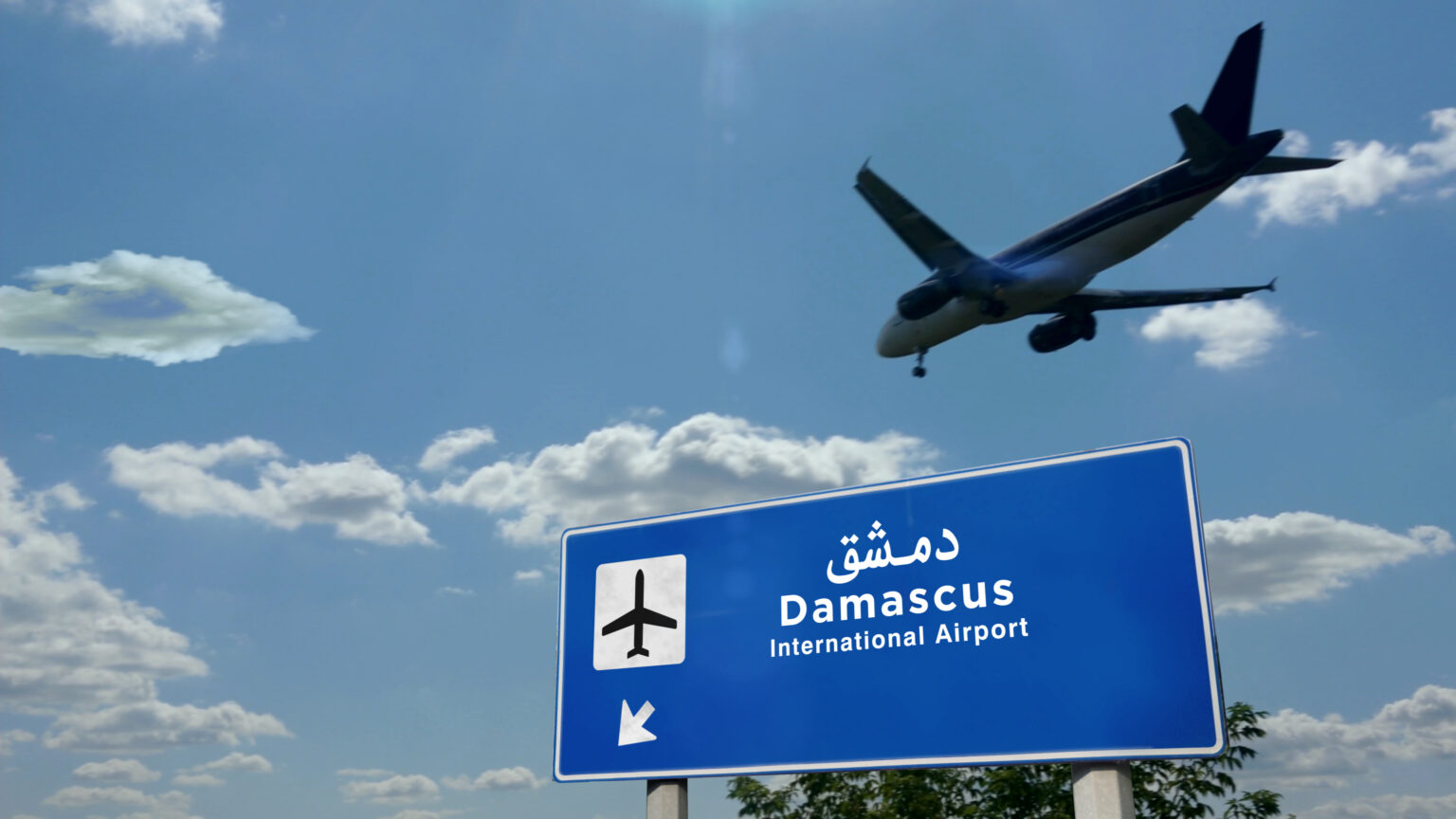Economic and Financial Sanctions
The Rise and Fall of the Assad Regime
Introduction
For more than five decades, the Assad family ruled Syria with an iron hand, shaping the country through authoritarian control, political oppression and systematic human rights violations. From Hafez al-Assad’s seizure of power in 1971 to Bashar al-Assad’s escape in 2024, the country has now borne the consequences of dictatorship, war and international isolation.
In response to the Assad regime’s oppression, the international community imposed a series of sanctions aimed at impairing the government’s ability to finance violence and war over the last years. These measures, led by the United States, the European Union and the United Nations, targeted key regime figures as well as the Syrian economy, oil exports, financial system and military supply chains. While the sanctions successfully put pressure on the regime and tried to isolate Syria on the world stage, they also contributed to significant hardship for the country’s population, triggering economic collapse, shortages of essential goods and the rise of a shadow economy.
A look back at the history of the Assad regime
Let’s take a brief look at Syria’s past first.
The Assad family’s rule in Syria lasted more than five decades and was characterized by authoritarian governance, human rights violations and systemic corruption. This era ended suddenly in December 2024, when President Bashar al-Assad fled the country in the midst of a successful rebel offensive. After the end of the Second World War, many borders in the Arab region were redrawn. Many countries that used to be colonies of European countries became independent. Syria gained independence from France in 1946 but also became part of the Arab-Israeli conflict immediately. However, the period that followed was characterized by political instability, with frequent coups and changes of leadership. Syria plunged into a permanent internal crisis for over 20 years, characterized by numerous upheavals. On February 1, 1958, the merger of Egypt and Syria to form the United Arab Republic was announced, which was dominated by Egypt from the beginning [1].
A coup by Syrian officers in September 1961 finally meant the end of the United Arab Republic from the Syrian side. After another coup in May 1963, the Baath Party came to power in Syria for the first time. With Hafez al-Assad, a member of the Assad family rose through the ranks of the Baath Party and the military. He played a key role in 1966 a coup that brought a more radical faction of the Baath Party to power. He then became Minister of Defence and was elected to Syria’s president in 1970. This rise established the more than 50-year dictatorship of the Baath Party and the Assad clan from 1963 onwards. He then established already an authoritarian state. Most of the opposition was broken in the Hama massacre in 1982. Since then, Assad’s position of power has been strong and hardly threatened. Anisa Makhlouf, wife of Hafez al-Assad, was the matriarch of the Assad family and belonged to the influential Makhlouf family, which controlled a large part of the Syrian economy. Their eldest son, Basil al-Assad, was the planned successor to Hafez al-Assad. He had a military background and was known for his image as a strong man. However, he died in a car accident in 1994, whereupon the succession passed to his brother Bashar. Bashar al-Assad assumed the role of President of Syria, seizing power after the death of his father in 2000.
He initially promised reforms but soon switched to authoritarian rule. The violent suppression of protests in 2011 ultimately led to the Syrian civil war. This military conflict began in March 2011, when peaceful protests against the government of Bashar al-Assad, inspired by the Arab Spring, were met with brutal repression. The violence escalated into a full-blown conflict involving opposition groups, Islamist factions, Kurdish forces and foreign powers.
In December 2024, as the rebels advanced on Damascus, Bashar al-Assad fled Syria. He initially sought refuge at the Russian-run Khmeimim airbase before being granted asylum in Moscow. His departure marked the end of the Assad family’s 54-year dynasty. The war has left over 500,000 people dead, millions displaced and the Syrian economy in ruins.
History of sanctions against Syria
International sanctions against Syria have evolved over time, targeting key figures in the Assad regime for their involvement in human rights violations, corruption and other illegal activities. Syria has been classified as a state sponsor of terrorism since December 1979. Additional sanctions and restrictions were introduced in May 2004 with the issuance of Executive Order 13338, which implemented the Syria Accountability and Lebanese Sovereignty Restoration Act of 2003 (SAA) and imposed additional measures under the International Emergency Economic Powers Act (IEEPA) (50 U.S.C. 1701 et seq.). [2]
In April 2011, following the Syrian government’s violent crackdown on peaceful protesters, the US imposed sanctions on several Syrian officials, including Maher al-Assad, under Executive Order 13572. This order targeted individuals involved in human rights violations. The EU also responded with restrictive measures against the Syrian regime, including asset freezes and travel bans on key officials. As the conflict in Syria escalated, both the USA and the EU expanded their sanctions lists to include further individuals and organizations that support the Assad regime. The so-called Caesar Syria Civilian Protection Act, named after Farid Nada al-Madhan’s alias, a Syrian defector who uncovered evidence of torture and killings, was enacted by the US in December 2019 and came into force in June 2020. The Act imposed sanctions on individuals and organizations that support the Assad regime, including members of Asma al-Assad’s immediate family.
In August 2020, the US Department of State imposed further sanctions on Asma al-Assad, the wife of Bashar al-Assad, for obstructing efforts to reach a political solution to the Syrian conflict pursuant to Section 2(a)(i)(D) of Executive Order 13894. [3]
Sanctioned individuals:
- Bashar al-Assad was sanctioned by the US in May 2011 under Executive Order 13573.
- Maher al-Assad, Bashar’s brother and commander of the Republican Guard, was sanctioned by the US in April 2011 for his role in human rights violations during the crackdown on the protests.
- Asma al-Assad, the First Lady, was sanctioned by the EU in March 2012, including an asset freeze and a travel ban.
- Rami Makhlouf, a cousin of Bashar al-Assad and prominent businessman, was sanctioned for financially supporting the regime.
- Members of Asma al-Assad’s family were sanctioned by the US in December 2020, including her father, Fawaz Akhras, for their support of the regime.
Impact of Sanctions on Syria and its Citizens
The sanctions imposed on Syria over the years, particularly after the outbreak of the civil war in 2011, have had a profound impact on the country and its people. These sanctions were designed to put pressure on the Assad regime to end the violence, respect human rights and introduce political reforms. We have already discussed the individual sanctions in the previous chapter. In addition, so-called sectoral and territorial sanctions were also imposed on Syria, but these also have a significant impact on the country’s economy and its citizens.
The sectoral sanctions target specific industries and sectors in Syria, namely
- Oil and gas industry -these sanctions imposed by the US and the EU restricted Syria’s ability to export oil, an important source of income for the country. This led to a significant decline in national income and foreign exchange reserves. We see the same effect today in Russia.
- Financial sector – restrictions on Syrian banks’ access to the global financial system hindered international transactions and affected both companies and individuals.
- Trade embargoes, import and export bans on certain goods disrupted supply chains, leading to shortages of essential goods and inflation.
Territorial sanctions, on the other hand, focus on specific regions or facilities in Syria.
The combined effect of these sanctions contributed to a significant decline in foreign trade, estimated at 42.9% by the end of 2012. [4] The destruction of infrastructure and massive displacement have affected Syrians’ basic rights, including access to health, adequate housing and food. [5] While the sanctions were aimed at putting pressure on the Assad regime, they also contributed to economic hardship for the Syrian population. The international community continues to debate the balance between maintaining pressure on former regime members and alleviating the suffering of the civilian population.
Recent developments in Syria after the escape of Assad
After the fall of Bashar al-Assad in December 2024, there were calls to reassess the sanctions imposed on Syria. In January 2025, the US Treasury Department issued General License 24, which expanded authorizations for activities and transactions in Syria in support of humanitarian efforts and basic needs. However, many sanctions remain in place, particularly those targeting individuals directly involved in past abuses. [6]
The new rulers in Damascus under the leadership of Syrian President Ahmed al-Sharaa, formerly known as Abu Mohammed al-Jolani, have called for a lifting of US sanctions. The US has eased the sanctions by granting a six-month exemption for certain humanitarian areas, while the EU says it is waiting to see if the new Syrian rulers will protect minorities and form an inclusive government. In late January, the EU said that it had agreed on a roadmap to ease sanctions on Syria to kick-start the country’s recovery. [7]
Farid Nada al-Madhan, known only by the codename ‘Caesar’ (see chapter 3) until now, not only called for the lifting of sanctions against Syria but also expressed the hope that the new government in Damascus would “establish national courts to prosecute war criminals and bring them to justice”. [8]
HTS – from Designated Terrorist Group to Syria's Interim Government
In December 2024, the Islamist group Hayat Tahrir al-Sham (HTS) under the leadership of Ahmed al-Sharaa played a decisive role in the overthrow of the Assad regime. The HTS subsequently set up a transitional government, with al-Sharaa assuming the role of transitional president.
HTS emerged from the Syrian branch of al-Qaeda and has been classified as a terrorist organization by several countries, including the United States and the European Union. HTS, formerly known as the Nusra Front, severed its ties with al-Qaeda in 2016. Since May 2014, the group has been on the United Nations Security Council’s Al-Qaeda and Islamic State sanctions list and is subject to a global asset freeze and arms embargo. [9]
After the fall of Bashar al-Assad, the HTS transformed itself into a government body. The interim government has already made efforts to stabilize the country, provide basic services and integrate various armed groups into a unified national army. However, international scepticism remains high due to HTS’s extremist past and concerns about human rights and democratic governance.
The group remains on international sanctions lists, which complicates efforts to engage with foreign governments and access global financial systems. Nevertheless, there have been some examples of international engagement:
- United States: US officials have held direct talks with HTS leaders, recognizing the group’s control of Damascus and its role in Syria’s political transition. Although the group remains classified as terrorist, these talks indicate a pragmatic approach to the evolving situation.
- Germany: German Chancellor Olaf Scholz has expressed his support for Syria’s reconstruction efforts in talks with interim President al-Sharaa, showing his willingness to work with the new government despite the controversial status of HTS. [10]
- Turkey: As an important regional player, Turkey has held direct talks with the HTS on border security, trade and counter-terrorism cooperation. Ankara is pushing for limited international involvement in Syria on the condition that the HTS distance itself from extremist elements. [11]
Still, the transformation of HTS from a designated terrorist organization to Syria’s transitional government presents a complex challenge for the international community. Reconciling the need to support the stabilization and reconstruction of Syria with concerns about HTS’s ideological roots and past actions will require careful diplomacy. The group’s future legitimacy will largely depend on its ability to govern inclusively, uphold human rights and distance itself from its extremist origins.
Conclusion and outlook
The fall of Bashar al-Assad in December 2024 marks a historic turning point for Syria, ending more than five decades of authoritarian rule by the Assad family. While the fall of the regime has opened the door to potential political change, it also presents Syria with immense challenges, including economic destruction, deep social fractures and the complex process of rebuilding a war-torn country.
The sanctions have helped to isolate the Assad regime, restrict its access to resources and put it under political pressure. However, these measures also contributed to economic hardship for the Syrian population by restricting access to essential goods, disrupting financial systems and strengthening the black-market economy. Following the fall of Assad, the international community is now debating whether the sanctions should be eased to facilitate Syria’s reconstruction or whether the restrictions should be maintained until a stable, democratic transition is ensured.
Although Syria’s future remains uncertain at present, the end of the Assad era offers an opportunity for renewal. The international community, including regional actors and Western governments, must strike a balance between humanitarian support and diplomatic pressure to ensure that the lifting of sanctions is linked to genuine reform, democratic governance and the protection of human rights.
Other articles
Sources
[1] https://de.wikipedia.org/wiki/Syrien
[2] https://www.state.gov/syria-sanctions
[3] https://2017-2021.state.gov/syria-sanctions-designations-on-the-anniversary-of-un-security-council-resolution-2254
[4] https://www.securityincontext.com/posts/economic-sanctions-on-syria-a-critical-reappraisal
[5] https://www.hrw.org/news/2023/06/22/questions-and-answers-how-sanctions-affect-humanitarian-response-syria
[6] https://home.treasury.gov/news/press-releases/
[7] https://www.reuters.com/world/middle-east/syria-turns-intermediaries-oil-imports-after-low-interest-tenders-sources-say-2025-01-31/
[8] https://www.theguardian.com/world/2025/feb/06/defector-who-exposed-assads-brutality-calls-for-syria-sanctions-to-be-lifted
[9] https://www.state.gov/foreign-terrorist-organizations/
[10] https://www.reuters.com/world/middle-east/germanys-chancellor-scholz-calls-interim-syrian-leader-al-sharaa-2025-02-07/
[11] https://apnews.com/article/turkey-syria-sharaa-erdogan-kurds-aca14899b624d7ca98c447ae7008b05d






